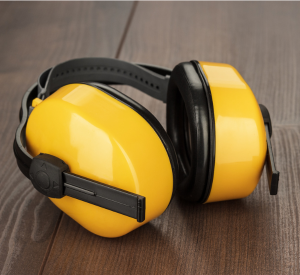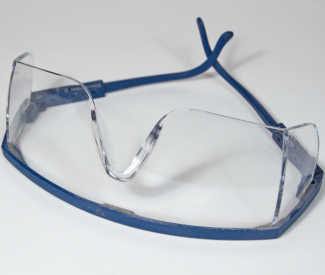May is National Healthy Vision and Better Hearing Month. Vision and hearing are two of our main human senses and provide security from outside hazards around us. Injuries to these senses are almost always preventable if the proper equipment is utilized.
Hearing Safety
Exposure to loud noise kills the nerve endings in our inner ear. As exposure increases, so does the amount of dead nerve endings. The result is permanent hearing loss that cannot be corrected through surgery or medicine. OSHA requires employers to implement a hearing conservation program when noise exposure is at or above 85 decibels averaged over an eight-hour time-weighted average (TWA). The first part of a protective hearing program is to know your workplace noise levels. Several sound-measuring instruments are available to measure the noise levels in a workspace. These include sound level meters, noise dosimeters, and octave band analyzers. The National Institute for Occupational Safety and Health (NIOSH) Sound Level Meter App is one tool available on mobile iOS devices that measures sound levels in the workplace. Under OSHA’s Noise Standard, the employer must reduce noise exposure through engineering controls, administrative controls, or hearing protection devices (HPDs) to attenuate the occupational noise received by the employee’s ears. Some hearing protection devices can be worn in tandem.
Hearing protection devices (HPD) include:
- Formable/Disposable Ear Plugs: Wash your hands before inserting the ear plugs. Rub the insert with your fingers to shrink them, tilt your head to the side, and insert it into the ear canal.
- Semi-Insert/Ear Canal Caps: These are worn against the opening of the external ear canal and kept in place by a lightweight headband with mild tension.
- Earmuffs: The ear cup fits around the outside of the ear, enclosing it and sealing it against the side of the head with a cushion.
 Vision Safety
Vision Safety
Under the OSHA General Duty Clause, employers need to provide workplace safety controls for recognized hazards. For vision hazards, the employer must ensure that each affected employee uses appropriate eye or face protection with hazards like flying particles, molten metal, liquid chemicals, acids or caustic liquids, chemical gases or vapors, or potentially injurious light radiation. NIOSH has reported that about 90% of workplace eye injuries were preventable if the appropriate eye protection was worn.
Vision protection systems include:
- Safety Glasses: ANSI-rated safety glasses protect from projectiles such as metal fragments, dirt or sand, and dust. These can be prescription and UV-rated.
- Safety Goggles: ANSI-rated goggles protect against liquid chemical exposures and create a seal all around the eyes to prevent exposure.
- Face Shield: This may be used for impact protection. Face shields are required when facial skin protection is needed. They can be used in conjunction with eyeglasses or goggles.
- Welding Shield: For protection from welding’s radiant energy, workers must use personal protective equipment such as safety glasses, goggles, welding helmets, or welding face shields. This equipment must have filter lenses with a shade number that provides the appropriate level of protection. A shade number indicates the intensity of light radiation that is allowed to pass through a filter lens to one’s eyes.
- Sunglasses: We may not address these as safety glasses, but sunglasses with a good UV rating will provide eye protection from the sun’s harmful UVA and UVB rays when workers are outside for an extended period. UV 400 is the best rating.
Using appropriate hearing and eye protection equipment helps reduce related workplace injuries. Remember that a large majority of workplace hearing and vision injuries are preventable, just by wearing the proper equipment!
For additional information on hearing and vision safety, please contact the Comp Alliance Director of Loss Control, Robert Blaisdell at This email address is being protected from spambots. You need JavaScript enabled to view it..

